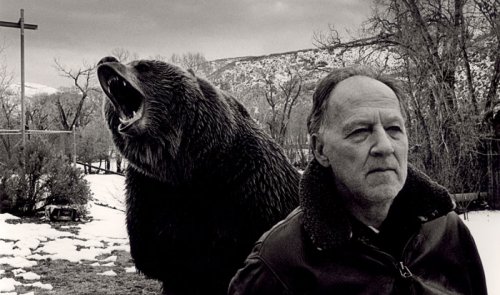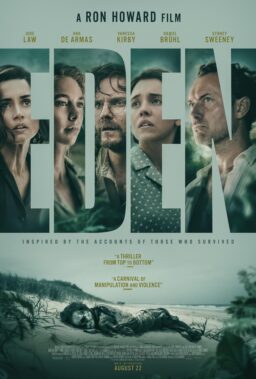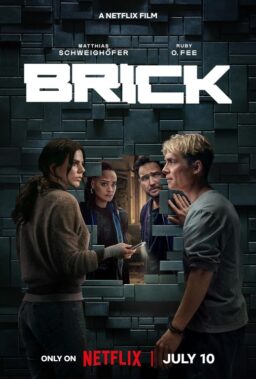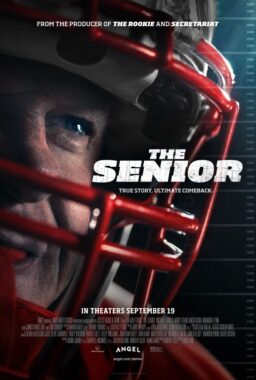I had in mind to write about something else this week, but our new software platform for the blog was acting up (as you might have noticed), and in the meantime I received an intriguing communication from a reader, the art critic Daniel Quiles, about Werner Herzog. Yes, there has been a lot about Herzog on the site recently, but in my mind there can never be too much. He and a few other directors keep the movies vibrating for me. Not every movie needs to vibrate, but unless a few do, the thrill is gone.
Herzog seems to react strongly to subjects he wants to make a film about. You never hear him saying someone “brought me a project,” or his agent sent him a screenplay. Every one of his films is in some sense autobiographical: It is about what consumed him at that moment. The form of the film might be fiction, might be fact, might be a hybrid. The material dictates the form, and often his presence in the film dictates the material: It would not exist if he were not there. In a way, that’s what Quiles is writing about in connection with “Encounters at the End of the World.”
Quiles: First of all, no other director in history could turn a blizzard-safety exercise into an allegory for the extinction of human life on this planet. This is sheer mastery of the documentary form.
Two additional issues that interest me are the motif of language and Herzog’s occasionally dismissive treatment of the day-workers at McMurdo. Apocalyptic as the film is, it is in equal measure profoundly optimistic about the myriad languages that persist even in Antarctica, both human and animal. While the scientific languages we encounter have to be translated for us to comprehend them, Herzog does his best to do justice to their different modes of understanding the universe and bringing it “into its magnificence,” as the Bulgarian tractor-driver concludes the film. Language– what facilitates any “encounter” and puts the non-sense of the universe into sense– is the life-force that struggles against our ongoing demise.
Hence Herzog’s outrage at the lapsed linguist who professes not to care that a language has died (though it obliterated his career and sent him to the middle of nowhere, so perhaps he did). Here, in a brief sequence, the film gets quite un-Herzogian. This man is one of two characters who the director does not allow to speak for themselves, using an interesting and hilarious trick of cutting them off via voice-over. To me this runs contradictory to Herzog’s recent films, in which Treadwellesque characters are given center stage and allowed to run their mouths to their hearts’ content. In “Encounters,” it is the highly skilled masters of their languages (the scientists) who are idealized, while the professional adventurers of McMurdo, who labor in miserable conditions at high salaries to fund globetrotting excursions for the rest of the year, are bores and phonys, akin to the buffoon running around the world breaking Guinness Book records.
Remarkably, Herzog laments that adventure ended more than a century ago; these people never got the memo. Treadwell of “Grizzly Man” didn’t get it, either, but he was mad enough to put himself in harm’s way and film it (not unlike our dear director). Treadwell and Graham Dorrington in “The White Diamond” seem like two poles for Herzog now, mad outcast and mad scientist, with those in between them not proving interesting enough. In “Encounters,” I get the sense that Herzog, like the old master that he is, is favoring the Dorrington side, that of the scientist, that of craft and virtuosity.
Ebert again. Quiles is right that Herzog has no interest in the in-between. Whether “mad outcast and mad scientist” represent the two poles of his work is open to question for this reason: Are they mad? Bruno S. of “Kaspar Hauser” and “Stroszek” was apparently in some degree mentally ill, or damaged as a child. Klaus Kinski behaved insanely at times, but I sense he was crafty like a fox, using his reputation to get his way. It wasn’t a stretch for him to play the title role in “Nosferatu the Vampyre.” But for the most part Herzog deals with sane people at the extremes. They can think logically, and he is fascinated by the choices their logical thinking has driven them to.
Quiles cites “The White Diamond,” the film about a man who designed an airship to investigate the unknown eco-system that lives in the treetops of the Amazon, and has no contact with the ground. When you see Dorrington’s teardrop airship and learn of its safety history, you may put him among the outcasts, but when he talks of uncounted species never seen by man, you can return him to the scientists. And what of Herzog himself? On the airship’s maiden flight, he insists on handling the camera himself, because (1) he does not want to risk the life of his cinematographer, and (2) if there is only one flight, how else to obtain the footage? What is he here? Mad artist?
Not mad at all. Simply brave, and like all great directors, determined to get that footage. If the airship crashes, there may be no more Herzog but if he doesn’t go, there will be no film. There is also a Herzog movie, “Lessons of Darkness,” in which he put himself in the middle of the blazing oil wells of Kuwait. And one, shown at Telluride but not I believe widely released, in which he and his team were trapped on a mountaintop by a blizzard and nearly died. He grows a little annoyed as people cite some of these stories, because they make him seem reckless, and that he is not. He does what he must to get his film, calculating the situation, hoping not to be surprised.
He is annoyed when some writers (including me) have suggested he went hundreds of miles up the Amazon on a lark, seeking the “voodoo of location” for “Fitzcarraldo.” In fact, as he corrected me, he had a perfectly sensible location, but it was burnt down in a border war, and he was forced to move to the only other place where two tributaries of the Amazon were close enough to pull a boat overland between them. (His determination to physically move a real boat raises other questions, but never mind.)
The phrase “voodoo of location” was first used by Herzog in my hearing when he explained that, for his “Nosferatu,” he sought out and used as many of the same locations as he could from the silent classic by Murnau. In some sense the genius of Murnau would haunt the film. If I were a producer asked to finance the film, that would sound like madness, but as a film critic, it makes perfect sense to me.












